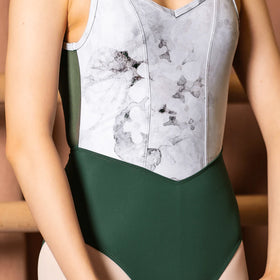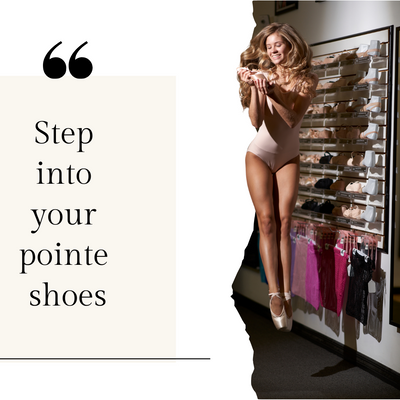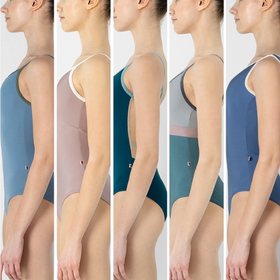HOW DOES THE FLEXISTRETCHER IMPROVE FLEXIBILITY AND STRENGTH?
HOW DOES THE FLEXISTRETCHER IMPROVE FLEXIBILITY AND STRENGTH?
- Working with the Flexistretcher allows one to simulate dance-specific or sport-specific movement patterns concentrating on improvements in execution and mobility.
- Utilizing the elastic resistance the Flexistretcher increases muscle strength in a safe, productive manner.
- As the band stretches, resistance increases, providing a stimulus to the muscle. This resistance does not rely on gravity. Instead, training with elastic resistance provides a variable resistance throughout the stretch or exercise, eliminating the possibility of using momentum and "cheating" your way through the movement.
- Working against this resistance forces the muscle to respond with increased effort, which promotes the development of muscular growth, strength, and power.
HOW IS THE FLEXISTRETCHER DIFFERENT?
- Unlike flimsy elastic stretching bands (such as the theraband) or stiff nylon straps, the Flexistretcher’s resistance has been carefully measured to provide progressive stimulus to the muscle without sacrificing control.
- This combination of support and stretch cannot be found in any other product.
- The Flexistretcher’s size and shape allows it to be used in full body stretches (such as a ballet arabesque), but it can also be adjusted to target specific, smaller body parts (such as shoulders or hamstrings).
- Built to withstand the daily use of professional dancers, the Flexistretcher’s sturdy construction and custom designed parts are guaranteed to last.
- Adjustable straps conform to any flexibility level and custom pieces are designed for added comfort and user ease-ability.
- Designed by a professional dancer recovering from injury the Flexistretcher and its training methods are researched and tailored to complement the ever evolving demands of ballet technique.
- Become certified! Checkout our training section to see dates for our next certification to be a Certified FLX Conditioning Specialist (CFCS).
HOW TO STRETCH WITH THE FLEXISTRETCHER?
- The key to effective stretching and exercising with the Flexistretcher is engaging an active stretch based on Proprioceptive Neuromuscular Facilitation (PNF). The PNF stretching techniques employ the concept that the muscle relaxation part of the stretch is fundamental to effectively enhancing flexibility and deepening the stretch. A popular PNF technique is the contract-relax, where the muscle is stretched, contracted, relaxed and then stretched further.
- In a contract-relax active stretch with the Flexistretcher, you assume a position and hold it there, engaging the agonist muscles. These are the muscles required in ballet to développé the leg and hold a big extension, such as the arabesque. Then, by resisting the resistance as if you are pushing your leg down to the floor, the targeted muscles are engaged. This is followed by the relaxation phase, and finishes with moving the limb into a greater range of motion
- The Flexistretcher facilitates contract-relax PNF by providing resistance, allowing the working muscle to voluntary contract against the tension. After a 5-10 second contraction followed by a 5-10 second muscle relaxation, the muscle is able to be stretched to a greater degree.
ADJUSTING:
- To adjust the straps: Pinch the metal slider with your middle finger and thumb. Slide up or down by using the pointer finger to guide the part along the strap. With your other hand pull and hold the back side of the loop while you are sliding the metal piece to adjust. Make sure to adjust the size of the loop as you are changing the length of the strap to avoid the metal piece coming completely off of the strap.
- Make sure the Flexistretcher® is the appropriate length before beginning an exercise.
- To change the overall length, adjust each nylon strap separately. Check that you adjust both sides equally, so the elastic always stays in the middle of the Flexistretcher®.
- Keep in mind: The shorter the nylon straps are, the more challenging the exercise will be, so start with the strap longer than you need, and slowly adjust it to be smaller, to find the right resistance for you.
PLACEMENT:
- Often, you will be holding the loops in each hand while your foot is on the foam pad of the Flexistretcher®. Always put the foam pad around the arch of your foot, not the heel or toes. This is to avoid the risk of the Flexistretcher sliding off the foot in the middle of the exercise.
- For more advanced stretches, such as the arabesque, both loops will be around the center of the foot and the foam pad will be around the OPPOSITE shoulder.
- Make sure to securely have the straps around the center of the foot and not the ankle. This avoids the risk of not being able to safely and easily come out of the stretch.
- NEVER place both loops around the ankle, make sure the loops are around the center of the foot.
SAFETY:
- NEVER place any part of the strap around your neck at any point.
- For children under the age of 12 make sure that there is supervision and that proper usage is understood before attempting any stretch alone.
- NEVER try any of these stretches with a theraband. These stretches and strengthening exercises were specifically designed to do with the Flexistretcher only. Flimsy straps or imitations will break and you will risk injury.
ELASTIC RESISTANCE METHODS:
- When learning to work with the Flexistretcher® and elastic resistance, begin with a flexed foot in the strap to encourage pressing out long into the resistance and successfully engage targeted muscle groups allowing for correct form.
- Remember to not let the band snap back or loose the tension. Maintain the tension throughout an exercise or stretch for maximum benefits.
- Work against gravity and perform slow and controlled movements.
- Working with the Flexistretcher® provides an inherent elastic resistance training approach to every stretch and exercise. For maximum results in flexibility and strength make sure to follow the guidelines of working with elastic resistance.
GUIDELINES:
The Flexistretcher is not a one time magic wand. Make sure to implement it consistently into your training routine. Here are some quick guidelines to follow:
- Frequency: at least 3 times per week.
- Intensity: slowly stretching to a point of mild discomfort.
- Duration: Hold the stretch for at least 10 seconds and work up to 30 seconds.
- Repetition: perform each stretch 3-5 times.







